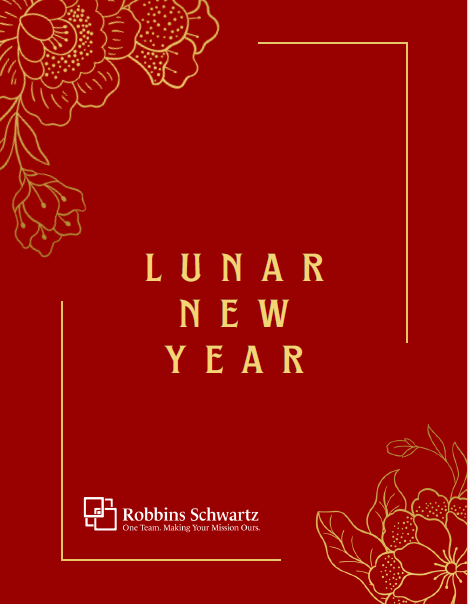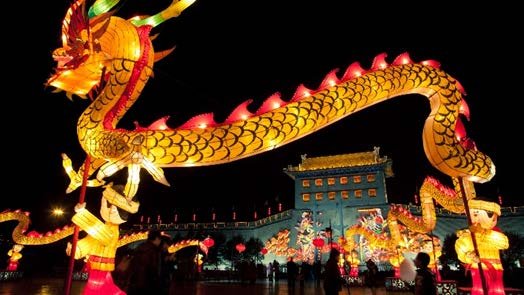
Lunar New Year
Jan 31, 2024
Share to:
The Chinese New Year, also known as the Lunar New Year — and in China, more commonly known as the Spring Festival (Chūnjié) — has become one of the world’s top five most celebrated festivals. Other East Asian and Southeast Asian countries such as Korea, Japan, Vietnam, Singapore, Malaysia, Thailand, Indonesia, Mauritius, and the Philippines celebrate with their own traditions, as well. These celebrations are all different and to respect those differences when speaking of the celebration collectively it is referred to as Lunar New Year celebrations. The length can vary depending on the country celebrating.

The months in the lunisolar calendar are calculated by the cycles of the sun and the moon. China adopted the Gregorian (Western) calendar in 1911, but still uses the lunar calendar for traditional celebrations.
The Chinese New Year falls on the first day of the first month in the lunar calendar. In the Gregorian calendar, the first day of the festival occurs on the new moon between Jan. 21 and Feb. 20. This year, 2024 is the Year of the Dragon 4722; starts on Saturday February 10 and ends Saturday February 24, 2024.
2024 is the Year of the Wood Dragon. It indicates a time for new starts, great beginnings, hard work, and power for growth and prosperity. The Dragon is a symbol of power and symbolizes auspiciousness, good fortune, and strength. The Dragon zodiac is associated with characteristics such as powerfulness, endlessly energetic, and full of vitality, goal-oriented yet idealistic and romantic, and a visionary leader. They know exactly who they are and possess the keenest sense of self among the 12 zodiacs of Chinese astrology.

Where the western zodiac derives from stellar constellations and uses a range of symbols representing animals, objects, and humans; the Chinese zodiac consists of 12 animals the Rat, Ox, Tiger, Rabbit, Dragon, Snake, Horse, Goat, Monkey, Rooster, Dog, and Pig.
Legend has it that the Jade Emperor held a race across the heavenly river to decide which animals should have the honor of the zodiacs. Everyone’s bet was on Dragon to win the grand prize. On the way to the race, Dragon encountered a village suffering from drought. Taking pity on them and stopping to give them rain, Dragon was late to the race, losing the top prize with honor.
The celebration begins with the Spring Festival and ends with the lantern festival. This is a time to visit family and many people travel to their hometowns to gather for a reunion dinner. Mooncakes are given as gifts as well as mandarin oranges symbolizing wishes for good luck and health. Red envelopes yasuiqian (money to suppress evil spirits) are traditionally passed out from married couples or the elderly to unmarried juniors and children containing money in even numbers. The color red is commonly worn as well as the wearing of new clothes to symbolize a new beginning in the year.
One-sixth of the world’s population participates in celebrating the Lunar New Year. Australia and New Zealand with one of the largest Chinese populations outside of Asia, the Chinese New Year celebrations in Sydney has over 600,000 people attending. In America, San Fransico claims the largest celebration with 500,000 people attending their annual Chinese New Year parade.
Lunar New Year events in Chicago:
Chinatown Parade (2/18/24) (Sunday) The parade will begin at 1:00 p.m. at the intersection of 24th Street and Wentworth Avenue and travel north on Wentworth towards the viewing stand at Cermak and Wentworth.

The Chinese Fine Arts Society sponsoring –
Lunar New Year Celebration at the Field Museum – Feb. 8, 2024, 11:30 a.m. -1:30 pm (Free with general admission)
Navy Pier Global Connections: Lunar New Year—Feb.10, 2024, 1-5:00 p.m. (FREE)
Lunar New Year Concert —Feb. 11, 2024, 2:00-5:00 p.m. (FREE)
Chicago Chinatown Chamber of Commerce hosts Lunar New Year Dinner Celebration Year of the Dragon at Phoenix Restaurant, Feb. 15, 2024, 5:30-9:30p.m. ($150 per ticket)
Chinese American Museum of Chicago in Chinatown, their current exhibit is entitled Chinese Cuisine in America: Stories, Struggles and Successes.
Sources:
Zodiac Origin Story – Chinese New Year
https://chicago.suntimes.com/2023/1/20/23563558/lunar-new-year-parade-chinatown-chinese-vietnamese-argyle-uptown
https://www.astrosage.com/2024/dragon-chinese-horoscope-2024.asp#:~:text=In%202024%2C%20Dragon%20will%20be,invention%2C%20and%20introduce%20new%20things.
- Laing, Jennifer; Frost, Warwick (30 October 2014). Rituals and Traditional Events in the Modern World. Routledge. p. 87. ISBN 978-1-134-59313-2. Retrieved 1 January 2023.
- “Chinese New Year festival & Parade”. chineseparade.com. 1 February 2013. Retrieved 22 February 2013
- “2013 Sydney Chinese New Year Twilight Parade”. sydneychinesenewyear.com. 17 February 2013. Retrieved 22 February 2013.
- “What’s the significance of Lunar New Year red envelopes?”. The Seattle Times. 25 January 2017. Retrieved 24 January 2020.
- Lee, Jonathan H. X.; Nadeau, Kathleen M. (2011). Encyclopedia of Asian American Folklore and Folklife. ABC-CLIO. p. 312. ISBN 978-0-313-35066-5.
